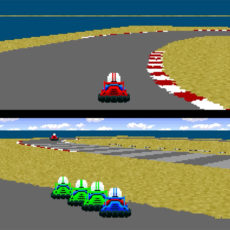
The Satellaview’s 30th anniversary coming up , and many don’t even know that this Japan-only Super Famicom add-on even exists. It’s basically a satellite modem peripheral for Nintendo’s Japanese SNES console, released on April 23, 1995, for ¥14,000-¥18,000 (roughly $150-$200 at the time).
This was a collaboration between Nintendo and St.GIGA, a satellite radio company, designed to beam games, magazines, and other content directly to your console via satellite broadcasts. Think of it as an early foray into online gaming and digital distribution, years before Xbox Live or the PlayStation Network.
LEGO Super Mario Nintendo Entertainment System 71374 Gameplay Building Set, Model Kits for Adults to...
- Build an interactive, 1980s-style TV set displaying the classic Super Mario Bros. game & activate it with LEGO Mario figure (not included)
- Authentic details of the NES console are recreated in LEGO style, including a controller and an opening slot for the buildable Game Pak
- The TV has a handle-operated scrolling screen, Mario figure reacts to the on-screen enemies, obstacles and power-ups when placed on the top
How did it work? Users would first attach the Satellaview to the expansion port on the bottom of your Super Famicom. It used a special cartridge called BS-X: Sore wa Namae o Nusumareta Machi no Monogatari (The Town Whose Name Was Stolen), which doubled as an interactive menu styled like an EarthBound-esque town. Games and content were downloaded to an 8MB Memory Pack (or the system’s 512KB internal storage for smaller stuff) during specific broadcast times, usually 4:00-7:00 PM JST. You also needed a satellite dish and receiver, which users either bought or rented.

Beyond games, it offered digital magazines, game strategy guides, news, and even radio-style broadcasts with voice acting (called SoundLink). Games ranged from remixed classics like BS The Legend of Zelda (a 16-bit reimagining of the NES original) to exclusives like Radical Dreamers (a Chrono series text adventure) and BS F-Zero Grand Prix. Some titles had add-ons, like modern DLC, for compatible cartridges.

The BS-X cartridge also let you create a custom avatar and explore a virtual town to access content. SoundLink games synced live voice acting or music with gameplay, and broadcasts often included quizzes or competitions where players could submit answers (though not in real-time due to the one-way satellite connection).

Despite Nintendo’s high hopes (President Hiroshi Yamauchi predicted 2 million units sold annually), the Satellaview didn’t take off and was discontinued on June 30, 2000. By 1995, the Super Famicom was nearing the end of its lifecycle. Newer, flashier systems like the PlayStation, Sega Saturn, and Nintendo 64 (released 1996) stole the spotlight with better graphics and gameplay. We feel the biggest reason for its failure is the fact that many games were time-limited (SoundLink titles tied to live broadcasts) or overwritten on Memory Packs, making them feel disposable.










